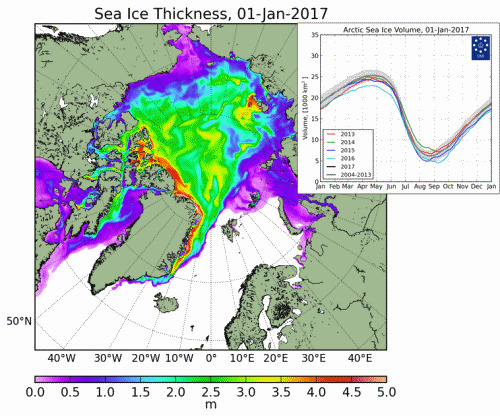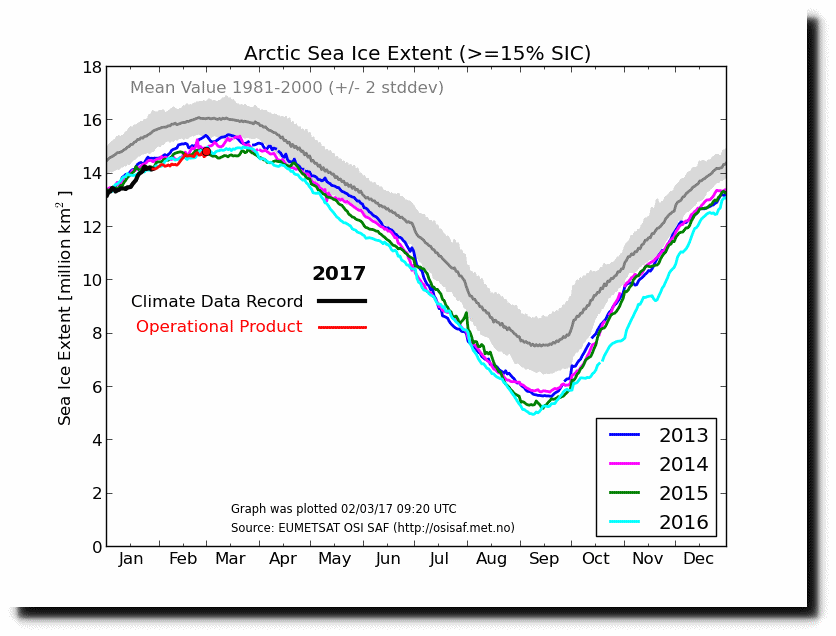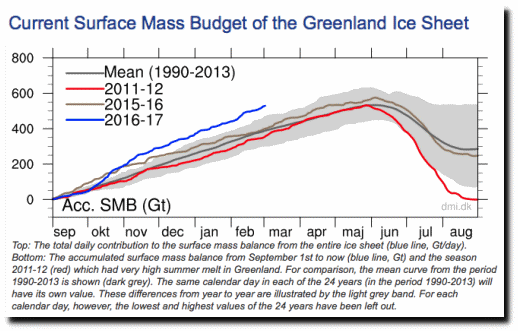While climate alarmists have been telling endless lies about record heat and melting in the Arctic and Greenland this winter, thick ice has been pushing into the East Siberian, Chukchi and Beaufort Seas – which determine the summer minimum extent.
Ice extent is nearly identical to all recent years.
Ocean and Ice Services | Danmarks Meteorologiske Institut
And Greenland is blowing away all records for ice gain.
Greenland Ice Sheet Surface Mass Budget: DMI
Climate alarmists are not scientists, they are not honest, and they need to be defunded.




